Hills and Dales Metro Park: An Overview
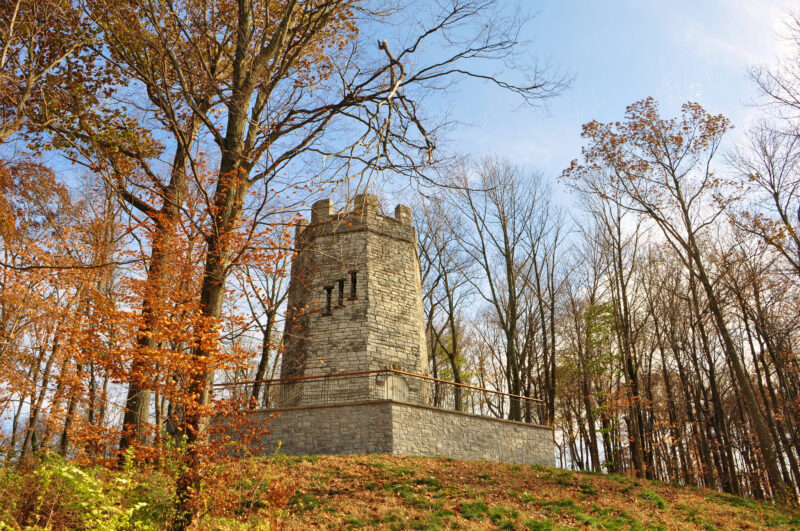
Frankenstein’s Castle
Hello! Welcome to my blog post describing the plants of Hills and Dales Metro Park. This park lies in Dayton, Ohio and has important historical significance as well as a plethora of plants to explore. John Patterson, co-founder of NCR, believed that education, recreation and outdoor exercise were the pillars of good health. Therefore, he founded this park to provide these services to Daytonians. The park includes remnants of his Adirondack-style camps that hosted countless picnics and parties for his employees in the early 1900s. One of my favorite remaining structures is Frankenstein’s Castle, a small tower that Patterson erected to overlook the Miami Valley! Today, the park is a thriving center of Ohio plants and trees. This site is home to a forested wetland that visitors can enjoy by walking along an accessible boardwalk. There are over 2 miles of wooded trails for walking and hiking, as well as Dogwood Pond that serves as a peaceful scenic stop.
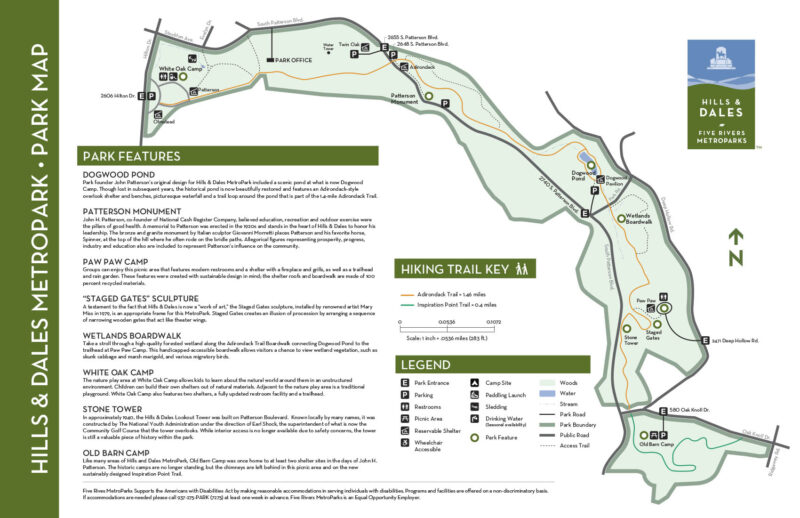
Hills and Dales Map
Plants!
Two Trees
Common Paw Paw (Asimina triloba)
The first tree I stumbled upon in this park was the paw paw tree. Hills and Dales is home to a large grove of these species, which is characteristic for paw paw because they often grow in clusters. This tree produces the largest edible fruit native to North America, making it an important food source for countless forest mammals and birds. Paw paw has large leaves that are easily identifiable by the “scratch-and-sniff” test! They smell faintly of jalapeño peppers, or just a spicey aroma.
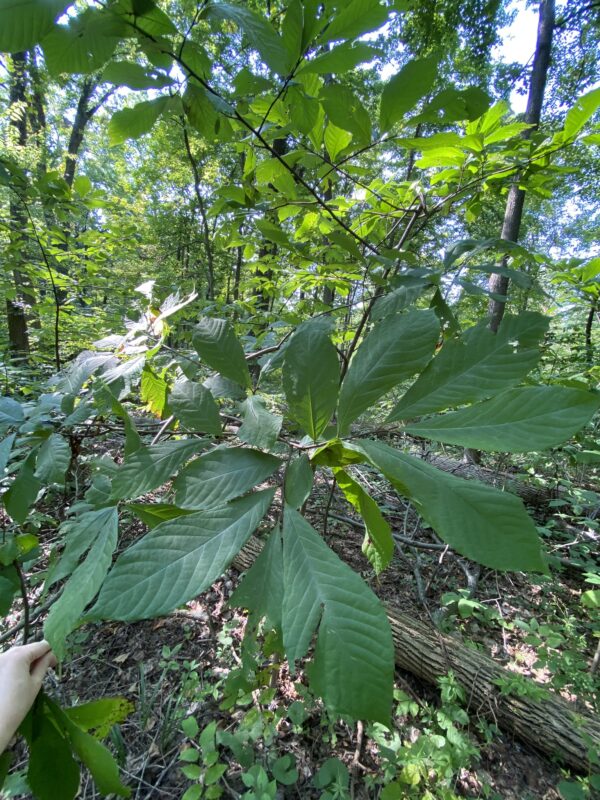
Paw Paw (Asimina triloba)
Eastern Redbud (Cercis canadensis)
The eastern redbud is native to North America and Canada. It is a tree species that grows up to 30 feet in height and prefers full sun or partial shade. Redbuds are distinguishable by their bright pink flowers in April and their heart-shaped leaves. These flowers are important to pollinating insects and add great value to the forest. Additionally, their seed pods often hang from beneath the leaves in a unique fashion.
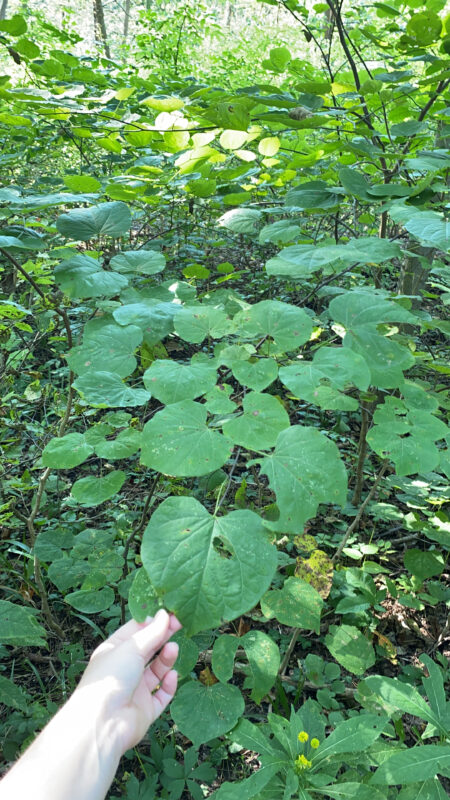
Eastern Redbud (Cercis canadensis)
Two Shrubs/Woody Vines
Common Buckthorn (Rhamnus cathartica)
This tree, unlike paw paw, is not native to the North American region. Common buckthorn was first introduced as an ornamental shrub in the early 1800s from Europe, northwest Africa, and western Asia. This member of the flowering plant family Rhamnaceae is a small tree or shrub species. The leaves and berries of this plant are toxic to humans and most mammals, but a favorite of birds.
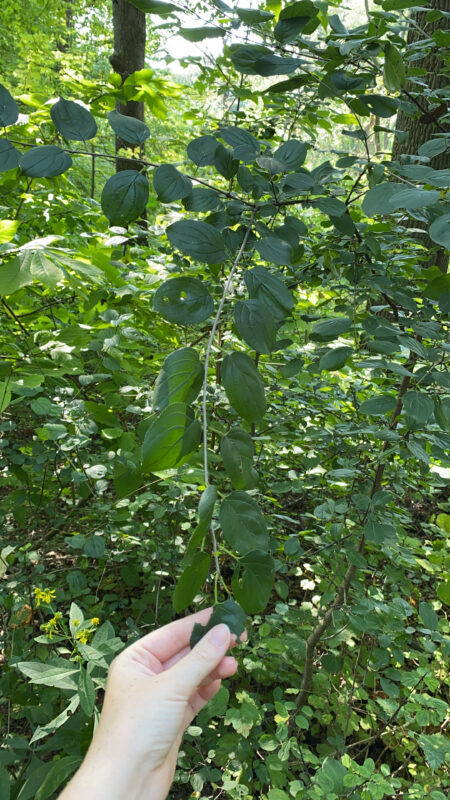
Common Buckthorn (Rhamnus cathartica)
Common Ivy (Hedera helix)
This plant, also known as European Ivy or English Ivy, is native to most of Europe and western Asia. This is a rampant, clinging evergreen vine and a common sight in gardens or along tree trunks. It was introduced by European colonists in the early 1700s and is an aggressive invader in North American forests. Despite this fact, it continues to be sold as an ornamental plant across the United States.
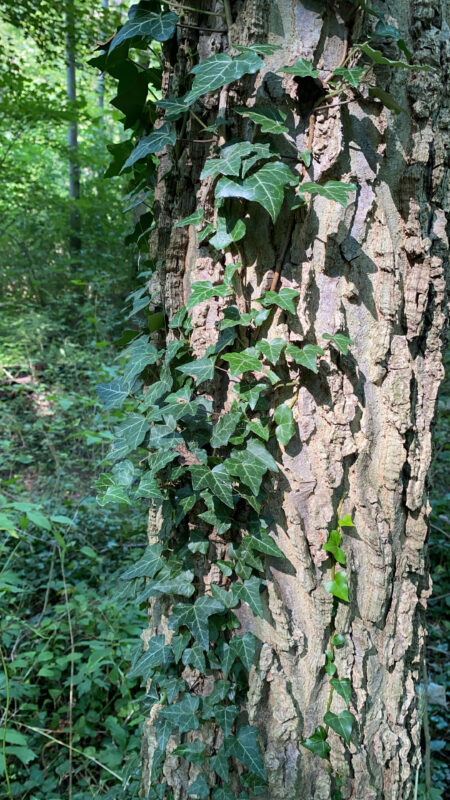
Common Ivy (Hedera helix)
Two Flowering Plants
Orange Coneflower (Rudbeckia fulgida)
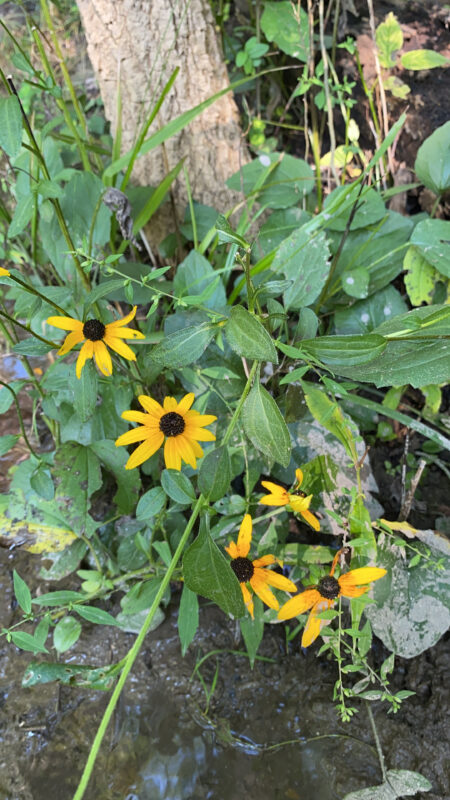
Orange Coneflower (Rudbeckia fulgida)
Moonseed (Menispermum canadense)
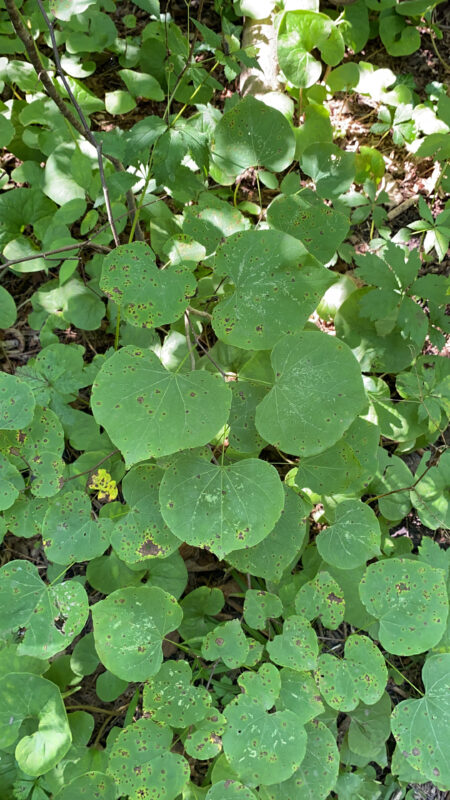
Moonseed (Menispermum canadense)
Poison Ivy!!!
And last, but certainly not least, I successfully found Poison Ivy (Toxicodendron radicans). This nasty vine is notorious for causing a painfully itchy rash if you are unlucky enough to brush up against its oils. Luckily, we can identify it by several key features. For one, this vine often grows on the ground, as seen here. Furthermore, it has three leaves on a stem that is slightly tinged red. As they say, “leaves of three, let it be!” Finally, you may find this plant growing up the trunks of trees. In this case, the vine can be identified by thick roots that look almost like worms clinging to the trunk. Be sure to look out for this plant during your next hike!
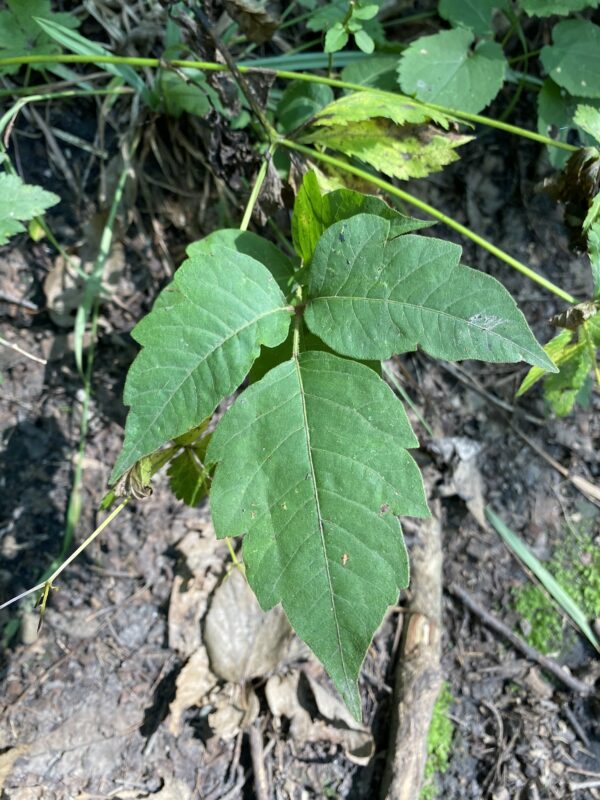
Poison Ivy (Toxicodendron radicans)
